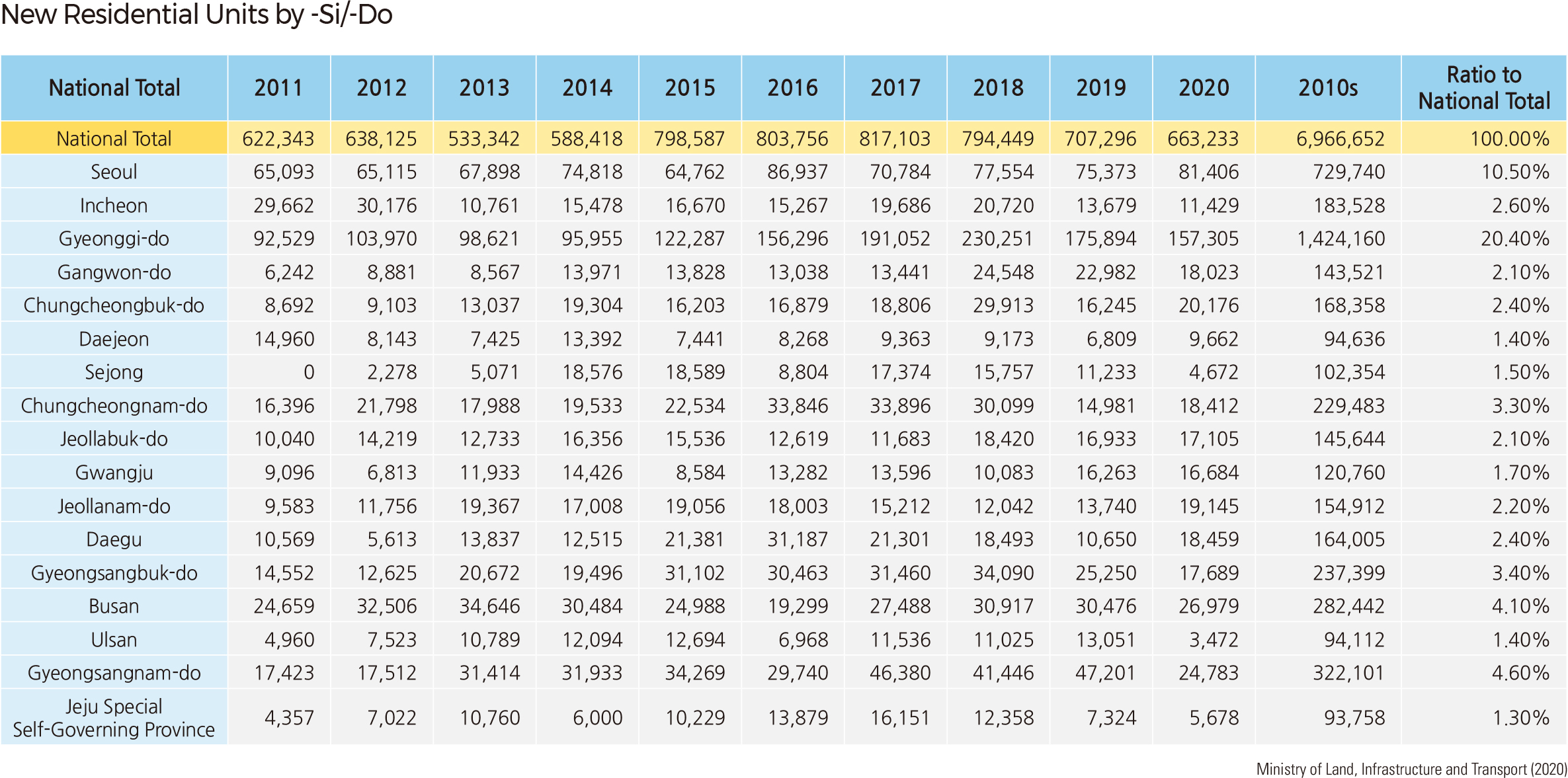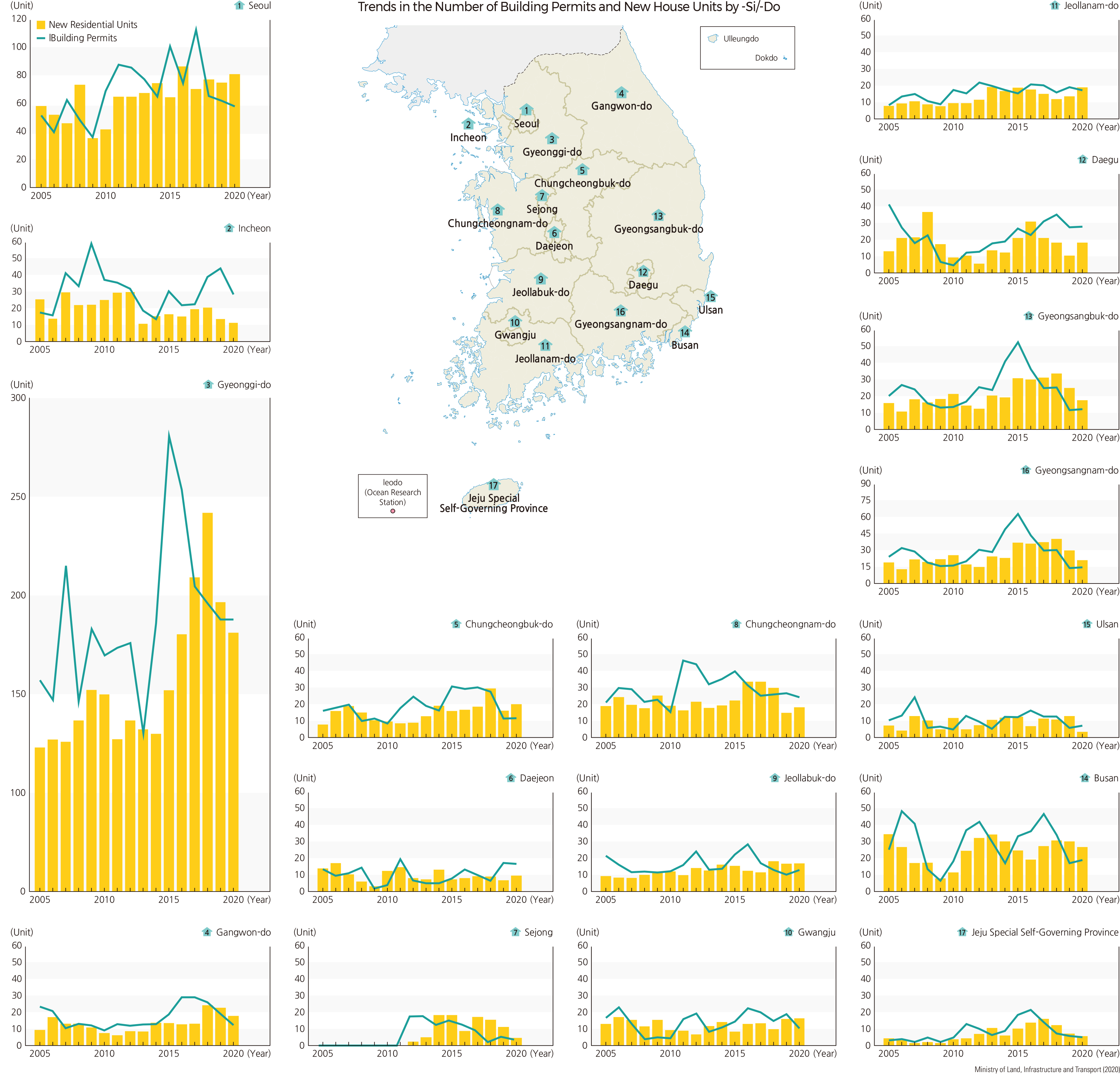English III 2021
Since 2000, Korea has continuously built more than 500,000 residential units every year. From 2011 to 2020, a total of 6,966,652 residential units were constructed. The number of residential units built each year varies yearly, from 530,000 in 2013 to 820,000 in 2017. There is a very large variation in the number of residential units built by year depending on -si/-do areas. Daegu supplied 5,613 residential units in 2012 and 31,187 in 2016 and recorded the greatest difference of 5.6 times in supply. Gangwon-do supplied 6,242 residential units in 2011 and 24,548 in 2018, which is about four times the difference in the number of residential units built. On the other hand, Seoul has supplied an average of 72,974 residential units over the past ten years. The annual variation in the number of residential units built by year is 1.3, the smallest in the country. In the 2010s, 2,337,428 houses, accounting for 33.6% of all residential units built, were built in the Seoul Metropolitan Area, including Seoul (10.5%), Incheon (2.6%), and Gyeonggi-do (20.4%). At the same time, 780,000 housing units were provided in the Yeongnam region, 600,000 units in the Chungcheong region, and 420,000 units in the Honam region. The number of vacant houses is increasing across the country. In 1995, the number was about 360,000 units, but as of 2020, it increased to 1.51 million, accounting for 8.2% of the total residential units. Except for Sejong, the proportion of vacant houses in metropolitan cities is 3–9%, with the lowest at 3.2% in Seoul and the highest at 8.9% in Busan. Pyeongchang-gun, Gangwon-do has the highest percentage of vacant houses at 25.2% among -si/-gun/-gu areas. Gwanak-gu, Seoul has the lowest at 0.6%. On the other hand, the proportion of households who do not own a home is 44%, which has remained similar for the past ten years. Seoul has the highest at 51.6%, and Gyeongsangnam-do the lowest at 37.0%. |


